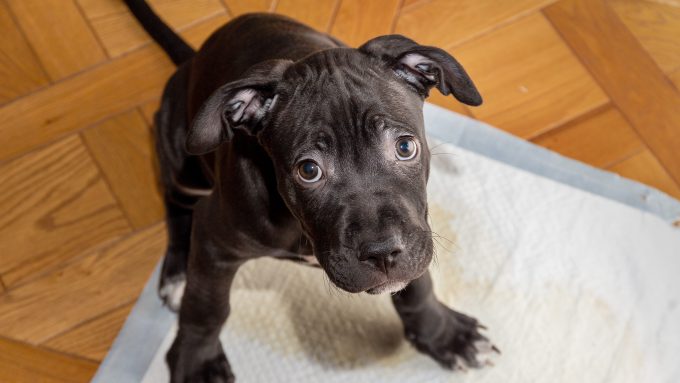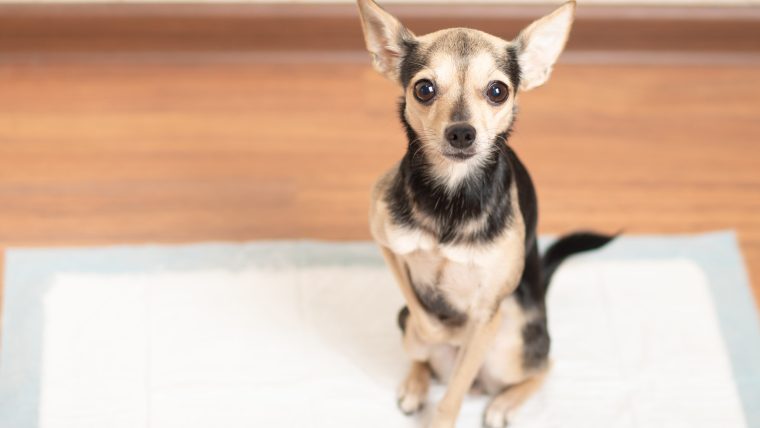
Training your puppy or adult dog to use a potty pad can be a helpful tool for housetraining. It also gives your dog a designated indoor space to relieve themselves when the outdoors might not be an option. But, if you’re not sure where to start, this guide can help you learn the ins and outs of how to potty pad train your dog.
Is potty pad training right for my dog?
Sometimes, going outside to go potty isn’t a feasible option for your dog. Very young puppies that aren’t fully vaccinated may need to stay indoors for safety. Senior pets may also need to relieve themselves more often than you can take them out. In addition, dogs with health issues that limit mobility may also make getting outside harder. And if you live in a high-rise apartment or somewhere with inclement weather, you may not be able to get outside either.
That’s where potty pads come in. They can be used to allow your dog to safely relieve themselves in a designated indoor area. Many companies also offer similar products to potty pads, such as doggie litter boxes and trays that can house pads or litter, helping to contain any messes.
Training your dog to use the potty pad
First, figure out where your dog will use their potty pad. This can be a designated corner of a laundry room, a section of the bathroom, or even a doggie litter box set up in an easy-to-clean corner of your home. If you have a very small puppy, you may want to set up the potty pad in their X-pen or a gated off kitchen they have access to.
Reward your dog every time they show interest in the potty pad. If you notice your dog doing the “potty walk” such as excessively sniffing, starting to squat, or actually going potty, quickly move them over to the potty pad. Once they’ve successfully gone, reward them with lots of treats and praise. From there, you can add in a command such as “go potty” every time you bring them to the pad.
Young puppies typically have to go potty every hour for every month old they are. A two-month-old puppy can hold it for about 2 hours max. An adult dog may be able to hold it longer. Dogs also usually have to potty after waking up, eating and drinking, or exercising. You can use this to your advantage by bringing your dog to the potty pad at scheduled intervals to encourage use.
How to handle accidents
If your dog has an accident, don’t despair! And don’t punish them. You want them to associate the potty pad with positive experiences. Punishing your dog for accidents will only encourage them to hide where they’re going. If you do spot your dog about to have an accident, quickly move them to the potty pad and reward them for finishing there.
Have some cleaning tools on hand if you can’t get to an accident on time. Enzymatic cleaners are a great tool to remove odors and stains. They break down the urine and stool particles, removing the scent. This can also discourage your dog from recognizing the spot as an OK place to go.
Transitioning to outdoor potty training
Potty pad training is a useful tool when you can’t get outside. Once your dog has mastered the potty pad, read up on how to potty train your puppy or your adult dog if you’re looking to transition outside. You can also check out these 10 potty-training tips from experienced dog parents!









